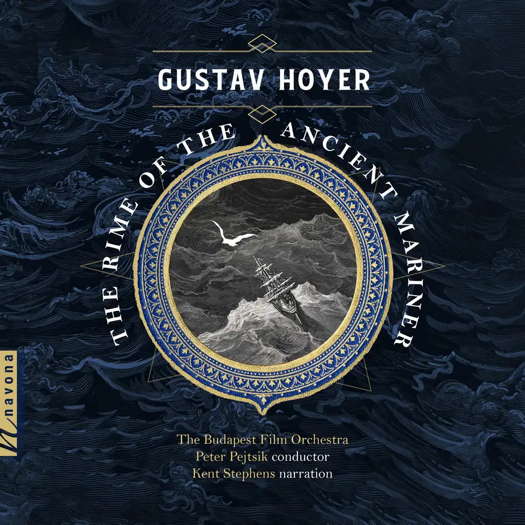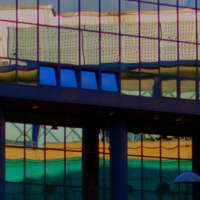 SPONSORED: The Many Hats of Allan Rae - A Birthday Greeting, by Endre Anaru.
SPONSORED: The Many Hats of Allan Rae - A Birthday Greeting, by Endre Anaru.
All sponsored features >>

Layers of the Programmatic
JOHN DANTE PREVEDINI listens to Gustav Hoyer's 'The Rime of the Ancient Mariner'
'... a sensitively crafted release ...'
The Rime of the Ancient Mariner is the recent release from Navona Records of the setting of the Samuel Taylor Coleridge poem of the same name by composer Gustav Hoyer for orchestra and narrator. The work is performed by the Budapest Film Orchestra under the baton of Peter Pejtsik with narration by Kent Stephens. The hour-long album is available in digital format with a booklet accessible on the Navona website, and the release features the entire seven-part work in two versions. The first seven tracks showcase the work with narration, while the last seven tracks present a purely orchestral version without the spoken words.
Following the seven parts into which Coleridge's poem is divided, Hoyer's piece spans seven movements played attacca. The scoring utilizes what some might describe as a neo-Romantic idiom, featuring a tonal harmonic language frequently shifting in key center and employing voice leading that is both chromatic and diatonic. In terms of text painting, the music is arguably not so much thematic - or even motivic - in its intent. Instead, Hoyer seems focused on expressing the immediate emotion of each particular moment in the action of the poem. In this sense, his programmatic setting of the poem is perhaps rather 'cinematic' in its architecture as a determiner of compositional form.
Listen — Gustav Hoyer: Part III (The Rime of the Ancient Mariner)
(NV6590 track 3, 0:00-0:30) ℗ 2024 Navona Records :
One noteworthy aspect of his orchestral writing here is that, despite the depth and breadth of sonic devices he employs in his palette, the music maintains a continuous lightness and playfulness from start to finish. This seems to remind us that we are still in the cheerful warmth of the wedding feast, the setting wherein the mariner is really telling this long tale in the poem, just as much as we are in the Antarctic sea voyage recounted in the mariner's tale itself. All of this speaks to Hoyer's simultaneous attentiveness to many layers of emotional and atmospheric depth. Another notable aspect of the piece is how it uses the narration from a compositional standpoint. While the orchestral material is constantly fluctuating in tempo, dynamics and timbre, the narration unfolds at a near constant pace. This sets up the sense of surprise when the narration halts for a long dramatic pause - for an instrumental interlude - during a particularly important moment in the story.
Listen — Gustav Hoyer: Part VII (The Rime of the Ancient Mariner)
(NV6590 track 7, 0:00-0:30) ℗ 2024 Navona Records :
All of this being said, there are still additional details of the orchestral writing which some listeners will likely prefer to savor in the second version presented on this album - the one without narration. Here, Hoyer's work essentially becomes a programmatic orchestral suite inspired by the poem. Listeners are free to enjoy it purely as such, or they can read the poem silently or aloud while the music plays. All of these, I imagine, would be rewarding experiences for an audience of this work, and I thus feel the decision to include both versions on the album is very well judged.
Listen — Gustav Hoyer: Part VII (orchestra only)
(The Rime of the Ancient Mariner)
(NV6590 track 14, 0:00-0:30) ℗ 2024 Navona Records :
In conclusion, The Rime of the Ancient Mariner is a sensitively crafted release, from the conceptual and sonic framework of Hoyer's suite to its meticulous execution by Pejtsik and the Budapest Film Orchestra with Stephens' crisp and engaging delivery of the words. The presentation of both versions together on the same album brings an exciting dimension of depth to the experience of the composition, showing the many layers of programmatic storytelling present in this particular work and serving as an example of what is possible in the subgenres of programmatic suites and instrumental works with narration.
Copyright © 12 May 2024
John Dante Prevedini,
Connecticut, USA




